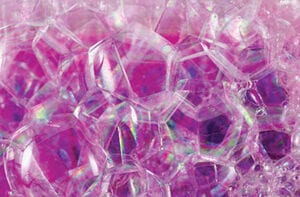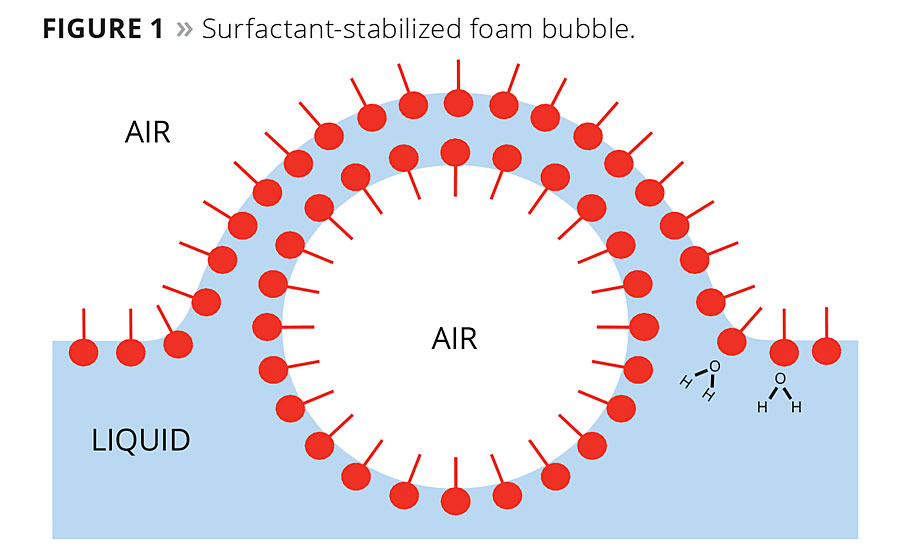How Defoamers Can Save Time and Money in Industrial Production
Selecting the Right Defoamer for Your Particular Application Requirements
Choosing the suitable defoamer for specific application demands is a nuanced process that demands mindful factor to consider of several elements, such as the foam kind, medium, and operating problems. Recognizing the nuances of defoamer performance-- consisting of speed and perseverance-- while likewise accounting for ecological and governing aspects is important. Furthermore, taking part in trials and talking to makers can offer valuable understandings. However, browsing these complexities can be daunting, and the effects of a poor selection may be substantial. What strategies can be used to ensure an ideal option?
Comprehending Foam Development
Foam development takes place when gas is trapped within a liquid, producing a steady framework of bubbles. This sensation can dramatically influence various industrial processes, especially in markets such as food manufacturing, drugs, and wastewater therapy. The visibility of foam can hinder mixing, lower item quality, and even result in functional ineffectiveness.
Foam normally forms due to a mix of variables, consisting of surface-active representatives, frustration, and the features of the fluid stage. Surfactants reduced the surface area stress of the liquid, helping with the formation of bubbles that can coalesce and support. Frustration, whether from mechanical stirring or gas intro, improves bubble formation, bring about increased foam quantity.
Understanding the auto mechanics of foam formation is critical for markets aiming to enhance their processes. By identifying the certain problems that promote foam generation, organizations can apply methods to mitigate its impacts.
Sorts Of Defoamers Available
Various sorts of defoamers are readily available to resolve the obstacles posed by foam in industrial applications. defoamers. Generally classified, defoamers fall right into 3 categories: silicone-based, non-silicone-based, and natural defoamers
Silicone-based defoamers are renowned for their efficiency and security throughout a vast array of temperature levels and pH degrees. They are typically utilized in applications where solid foam reductions is necessary, such as in adhesives, layers, and paints. Their low surface stress permits quick foam collapse.
Non-silicone-based defoamers, frequently made from organic compounds, provide an option for applications delicate to silicone deposits. These defoamers can be additional split right into polyether and ester types, each tailored to fulfill specific formulation requirements. Non-silicone defoamers are frequently used in food processing and personal care products due to their compatibility with various formulations.
Natural defoamers, derived from plant or animal sources, are obtaining grip due to their environmentally friendly account. These products are especially appealing in applications where regulative compliance and sustainability are extremely important, such as in agrochemicals and biotechnology.
Choosing the ideal kind of defoamer is critical for optimizing performance and guaranteeing compatibility with certain applications.
Trick Application Factors To Consider
When selecting a defoamer, it is important to take into consideration the details application needs to make sure ideal performance. defoamers. Various markets have unique demands, such as food handling, pharmaceuticals, or wastewater treatment, and each application might need unique defoaming homes
Key variables to examine include the tool in which the defoamer will be made use of, whether it is water-based, oil-based, or a mix thereof. The temperature and pH degrees of the application can also substantially affect find out the effectiveness of a defoamer. In addition, compatibility with other chemicals existing in the system is essential to stop damaging reactions that can jeopardize efficiency.
Another vital consideration is the foaming actions of the details system. Understanding whether the foam creates promptly or gradually can guide the choice of a defoamer that targets the origin effectively. Additionally, the wanted speed of defoaming can affect the selection, as some applications require quick action while others may endure slower defoaming procedures.
Lastly, environmental and regulative considerations need to not be overlooked, especially in markets with strict compliance requirements. Choosing a defoamer that lines up with these variables guarantees both effectiveness and safety and security in the application.

Efficiency Screening Techniques
Examining the efficiency of a defoamer requires a systematic strategy to screening that precisely measures its effectiveness in details applications. Numerous performance testing approaches can be used to identify the ideal defoamer for a provided solution.
One typical method is the bubble examination, which evaluates the defoamer's capability to reduce foam volume over time. This examination includes creating a stable foam and after that including the defoamer to observe the rate of foam collapse.

Eventually, choosing the proper efficiency screening method depends on the certain application and the kind of foam being attended to. Each technique uses useful data that can assist formula modifications and improve the effectiveness of the defoamer in sensible applications.
Finest Practices for Choice


Following, take into consideration the defoamer's efficiency in regards to rate of activity and perseverance. A quick-acting defoamer might be essential for procedures where quick foam reductions is essential, while an extra relentless solution could be required for prolonged foam control. Furthermore, examine the environmental impact of the defoamer, including its biodegradability and any regulatory compliance needs.
Conduct tests with chosen defoamers to establish their efficiency in real-world conditions. This step is essential to verify that the picked item satisfies performance assumptions. Seek advice from with producers or suppliers for technological support and guidance, as they can give useful insights right into product formulations and application strategies. By adhering to these ideal methods, you can enhance foam control performance and make sure the longevity of your procedures.
Conclusion
In recap, picking the appropriate defoamer necessitates a detailed analysis of various aspects, consisting of foam kind, tool, operating problems, and ecological considerations. Understanding the distinct qualities of foam formation and the offered defoamer choices is critical.
Picking the ideal defoamer for specific application needs is a nuanced procedure that requires mindful factor to consider of numerous variables, such as the foam medium, type, and operating conditions.Selecting the right defoamer is essential for accomplishing ideal efficiency in foam control applications. A quick-acting defoamer may be essential for procedures where rapid foam suppression is essential, while a much more relentless formula might be needed for long term foam control.In recap, choosing the More Info suitable defoamer demands a comprehensive evaluation of different factors, consisting of foam kind, medium, operating problems, and ecological considerations. Understanding the one-of-a-kind attributes of foam formation and the readily available defoamer alternatives is vital.